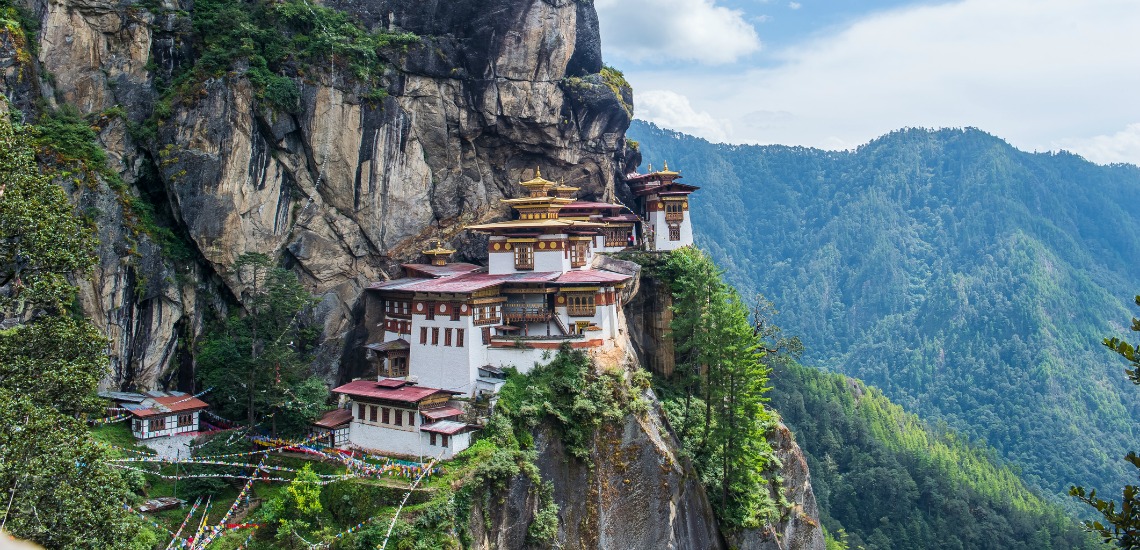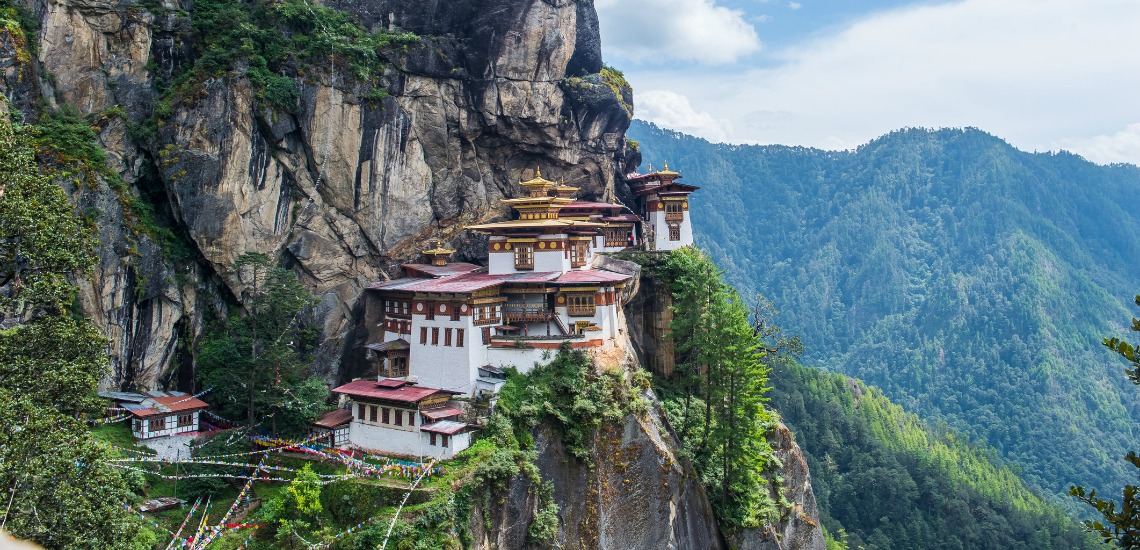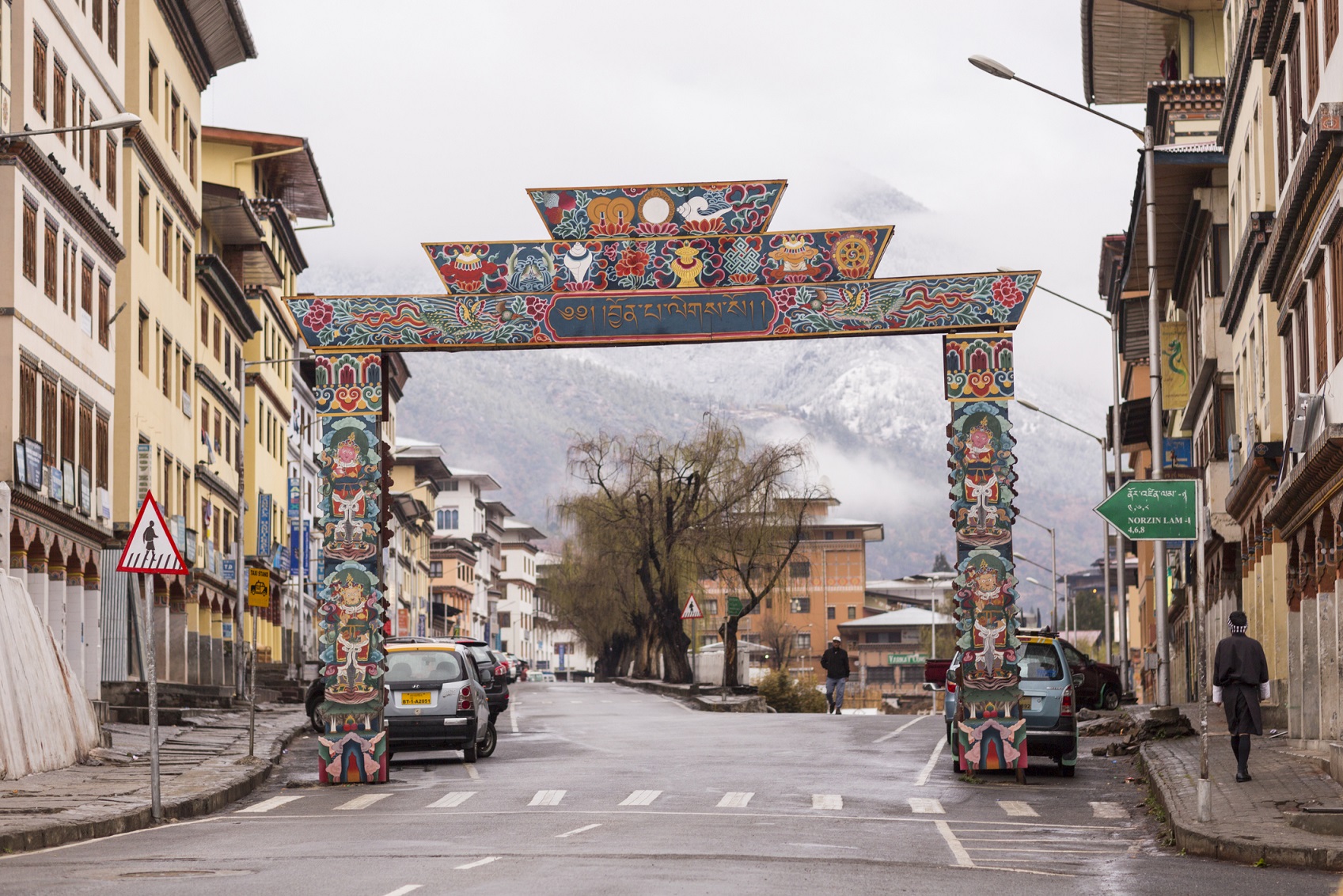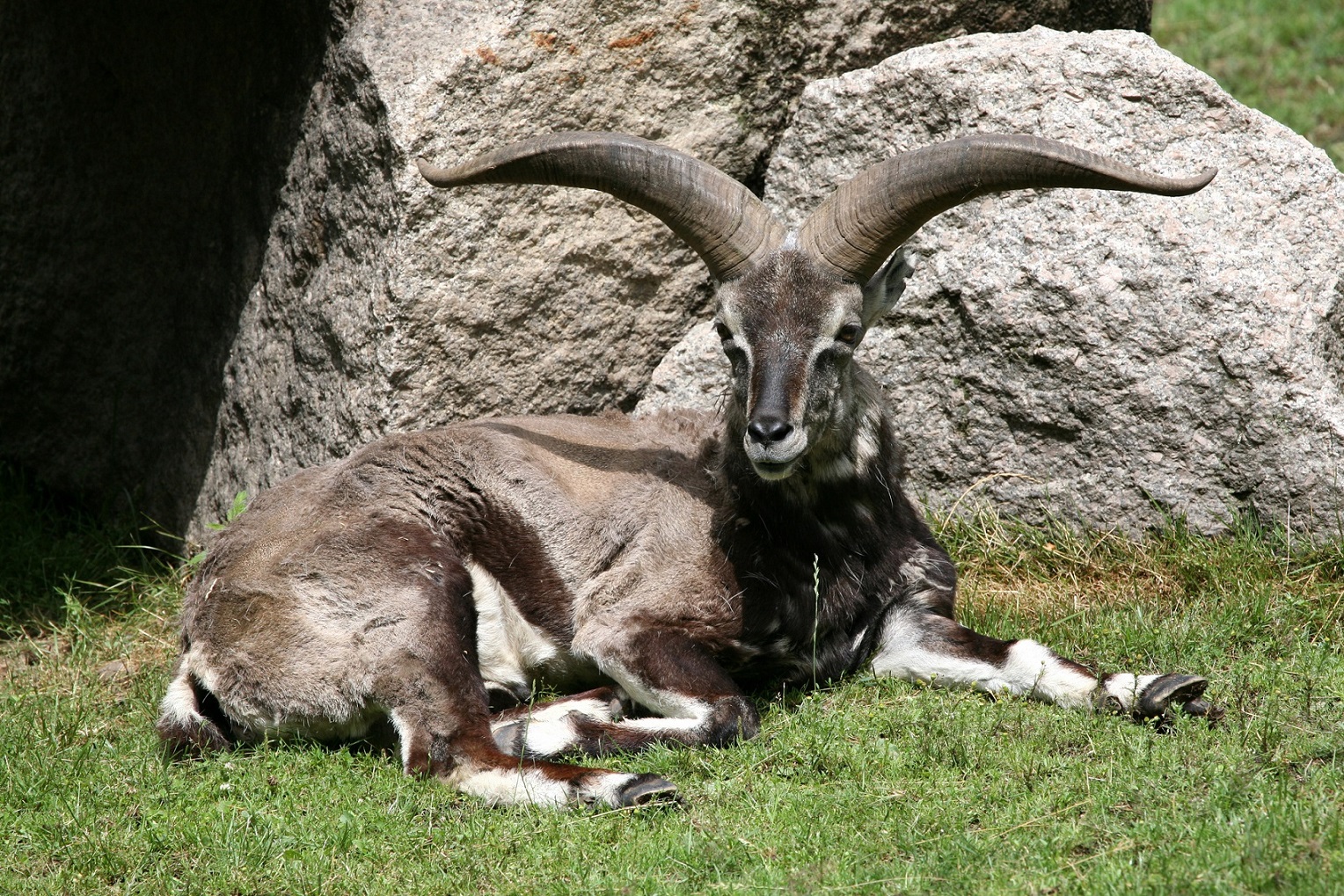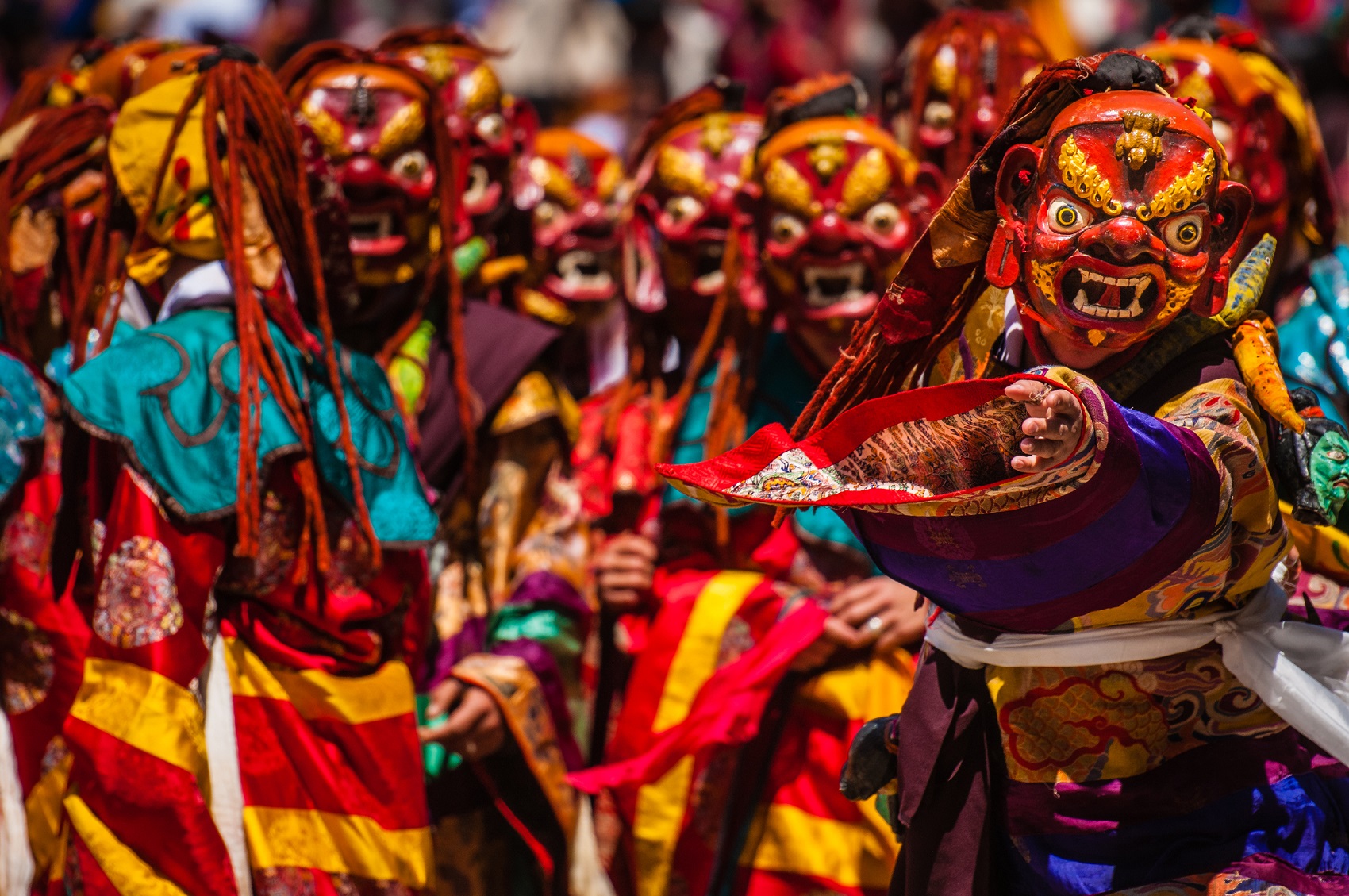Located high up in the Himalayas with China and Nepal as neighbours, is a tiny kingdom with only a quarter of a million people that they call the happiest place on earth. Known for its awe-inspiring landscapes, rich culture and smiling people, the mystical Kingdom of Bhutan has an allure like no other. Bhutan even created the Gross National Happiness index to measure the country’s success. If this concept hasn’t convinced you about the uniqueness of the country, here are 10 more extraordinary things about the tiny nation that will be sure to put a smile on your face and make you want to visit now.
Embark on a spiritual journey to the Taktsang Monastery (Tiger’s Nest)
No visit to Bhutan is complete without trekking up to Taktsang Monastery, which clings to a cliff a dizzying 900m above Paro Valley’s lush rice fields. Dating back to the 17th century, this ancient monastery is one of the kingdom’s most impressive landmarks and is considered one of its most sacred religious sites. According to legend, Guru Rinpoche, also known as Padmasambhava, arrived some 1,300 years ago on the back of a flying tigress to vanquish a local demon and subsequently spent three years meditating in one of the caves the monastery is built around, before spreading Tantric Buddhism throughout the kingdom. Every Bhutanese is expected to make the pilgrimage at least once in his lifetime. Once you have made the steep 2.5-hour climb up to its inner sanctum, through shady blue pine forests and over a dazzling waterfall via a series of stone steps, stop along the way to enjoy the mesmerising views and explore the peaceful temples and meditation caves. Don’t leave before receiving a blessing from a resident monk – it will leave you feeling enlightened.
Known for its awe-inspiring landscapes, rich culture and smiling people, the mystical Kingdom of Bhutan has an allure like no other.
Hike the mystical Snowman trail
The Snowman Trek 1, one of the hardest high-altitude treks in Bhutan, is undertaken by only a handful of trekkers each season. This epic 216-mile adventure, covered over 25 days from Gunitsawa Village in Paro Valley to Sephu in Trongsa, crosses several high passes, travels through the mountain kingdom of Lunana, one of the remotest inhabited valleys on earth, and visits the fabled villages of Laya and Thanza. This challenging trek, known as the holy grail for seasoned Himalayan trekkers, offers a once-in-a-lifetime opportunity to experience the kingdom’s untouched natural beauty, jaw-dropping views and rich culture, and meet the cheerful locals. It is only accessible two months out of the year and has a 50% failure rate.
Find your happy place with a Bhutanese bathing ritual
Drawing on both Indian Ayurvedic practices and traditional medicine of 7th-century Tibet, this pampering bathing ritual, which can be experienced all over Bhutan, is not to be missed. After a long day hiking through the mountains, a relaxing soak in a wooden tub filled with a unique mix of river water, Artemisia leaves and fire-roasted river stones is the perfect way to soothe aching limbs. If you’re looking for an authentic experience without compromising on luxury, head to Amankora Gangtey, one of Bhutan’s most luxurious hotels, set high above Gangtey Valley. This blissful ritual takes place in a local farmer’s stone shed off the resort with spectacular views of the Himalayan peaks. Haa Valley Homestay, a cosy farmhouse located in the traditional village of Dumchoe, offers a more rustic but equally memorable alternative that takes places in an outdoor wooden tub.
Sample the famous, fiery chilli and cheese dish in a Bhutanese home
Rural life in Bhutan has remained unchanged for centuries, and the best way to get a glimpse of the simple daily life of a typical Bhutanese family is at a homestay on farms scattered across the countryside. You’ll have the chance to work with farmers, watch as they churn butter or milk cows, and try authentic cuisine including the national dish ema datshi, a fiery blend of chillies and cheese.
Explore the world’s only capital without traffic lights
When you walk through the captivating city of Thimphu – the only capital in the world without traffic lights – you’ll witness the kingdom’s strong cultural traditions and slow modernisation (and not a McDonald’s or Starbucks in sight!). You’ll see people in national dress on the streets, and every new building is still built in the same traditional style with whitewashed walls and carved wood. There are also eclectic shops, the colourful weekend market and the gigantic Buddha Dordenma Statue to see.
Meet blue sheep and red pandas
Bhutan is home to an array of endangered animals found in its many national parks and wildlife sanctuaries, including the national animal takin, a strange woolly creature that can be seen in Motithang Takin Preserve in Thimphu. You can also encounter blue sheep, although they are neither blue nor true sheep! Known locally as bharals, they look more like goats and have curved horns. Bharals and red pandas live high up in the mountains, while the black-necked crane can be found in the Phobjikha Valley in winter. With these colourful animals and birds, Bhutan is a glorious palate of colours!
See Bhutan’s finest architecture
Visiting some of Bhutan’s most awe-inspiring dzongs is a must. These age-old fortresses showcase the country’s impressive artistic and intellectual heritage. Among the finest are the royal family’s ancestral home, Trongsa Dzong, which soars over a ravine above the Mangde Chhu river and seems to float in the early morning mist – an experience not to be missed, despite the harrowing drive. There is alsoPunakha Dzong, known as The Palace of Happiness, which lies at the confluence of the Mo Chhu and Pho Chhu rivers. The route to Punakha takes travellers over the renowned Dochu La Pass, and the dzong is reached via an enchanting orange, red and white wooden cantilever bridge. It is arguably the most beautiful fortress in the country, especially in spring when lilac-coloured jacaranda trees are in bloom around its towering whitewashed walls. In winter months, monks use the dzong as their official residence and you can listen to them chanting.
Witness a mesemerising masked dance between gods and demons
Tshechu is a religious festival that forms a major part of Bhutanese life, offering visitors the chance to be immersed in the country’s rich culture. Each one features colourful masked dancers performing spiritual dances including the Ging and Tsholing Cham, a sacred war dance between gods and terrifying demons. If you’d like to join a more popular one, the Paro Tshechu is held every spring in the town of Paro. Otherwise, there are plenty of other events, such as Ura Tsechu, a five-day dance festival held in Bumthang each November where monks as well as laymen wear masks while performing. It attracts fewer tourists and provides great insight into Bhutanese culture. Meanwhile, if you’re in Bhutan in February, visit during the Punakha Drubchen, which sees the recreation of the Tibetan invasion of the kingdom in the 17th century.
Spend an afternoon at an archery tournament
Bhutan’s national sport is seen as a celebration of the country’s way of life. Tournaments are held across the country, and provide insight into local culture. These competitions are major social events – expect plenty of feasting, drinking and light-hearted rivalry. There are even “jeerleaders” in each team, who attempt to put the archers off their mark.
Raft down 15 hair-raising rapids
White-water rafting, a relatively recent introduction to Bhutan, is the ideal way for thrill-seekers to see the country’s pristine natural surroundings. A superb choice is the Pho Chhu and Mo Chhu rivers in the Punakha Valley. The 16km course takes you through crystal clear waters past dramatic mountain scenery and the majestic Punakha Dzong, encountering around 15 Class II to IV rapids along the way.
There are plenty more reasons that make Bhutan the wonderful nation it is. But to explore these, you will have to visit personally. Bhutan is just a five-hour plane ride away from Singapore on Drukair, and promotional rates are available from 1 September 2016 to 30 November 2016.
Not convinced (seriously!)? Watch the video below and let Superadrianme and Miss Tam Chiak take you through more wonders of Bhutan!
Wonders of Bhutan
Shop before you fly!
Shop 30 days in advance and up to 12 hours before your flight at the comfort of your own home. Plus, enjoy tax and duty-free prices and online-exclusive offers. Shop now at iShopChangi!
Be rewarded when you shop at Changi!
Leap into a world of exclusive privileges as a Changi Rewards member. Enjoy GST-absorption for your purchases at participating outlets in the public areas of the airport and more. Sign up for the FREE membership here.
WiFi routers, travel insurance, attraction tickets and more!
Specially curated to meet your travelling needs, Changi Recommends offers an extensive range of travel necessities such as WiFi routers, travel insurance and more to help you get ready for your holiday. Shop now at Changi Recommends!
Best Time to visit
The spring months of March-May are the best time to visit Bhutan in its natural glory. Several festivals are also held during this period.
Transportation
All holidays to Bhutan must be booked through Bhutanese tour operators (or one of their international partners), who will organise all transport while you are in Bhutan, including transfers from the airport to your destination.
Taxis can be found in major cities and tourist areas, but are not regulated and few are metred. For long-distance trips, they operate on a flat rate that is rarely open to negotiation.
Currency
Bhutanese Ngultrum (Nu for short). Tourists can exchange traveller’s cheques or cash at the foreign exchange desk at Paro Airport and Bank of Bhutan branches in major towns such as Paro and Thimphu. As you travel to the interiors, ATM and banking facilities will become almost non-existent. US dollars are accepted in most tourist areas. Some hotels provide foreign exchange services, but many of these are limited to US dollar exchanges. Credit cards are becoming more widely accepted.
Book Now
Drukair operates three flights from Changi Airport to Paro each week. Search for airfare deals and book your tickets now!



